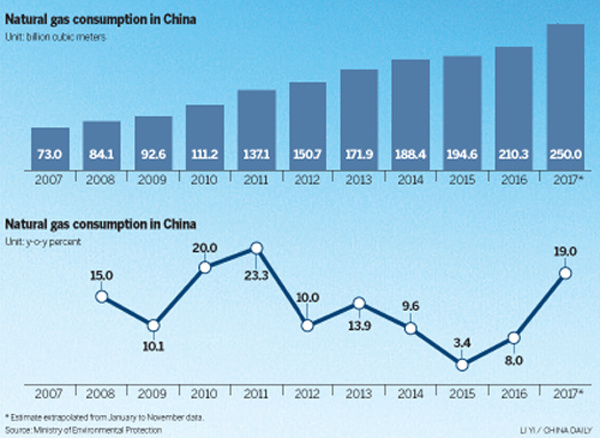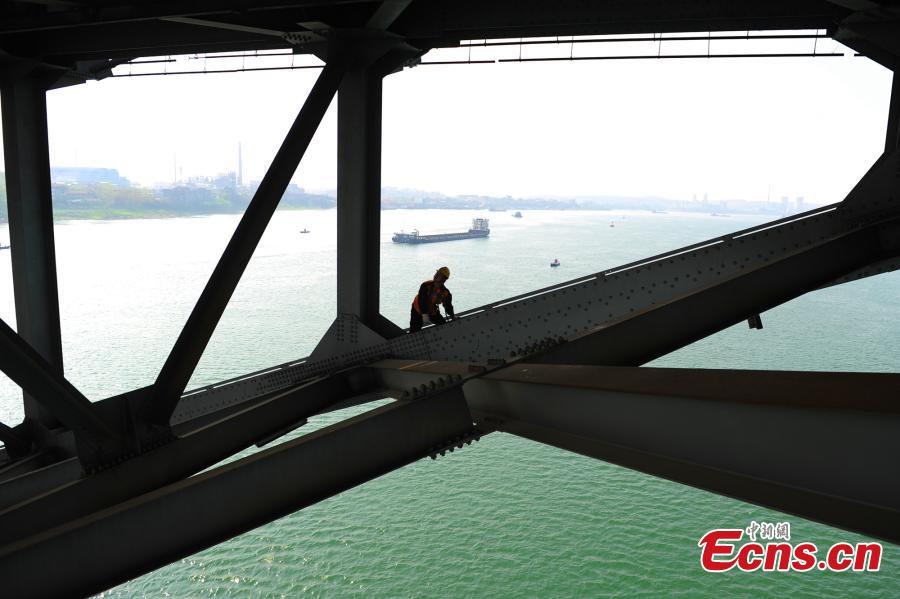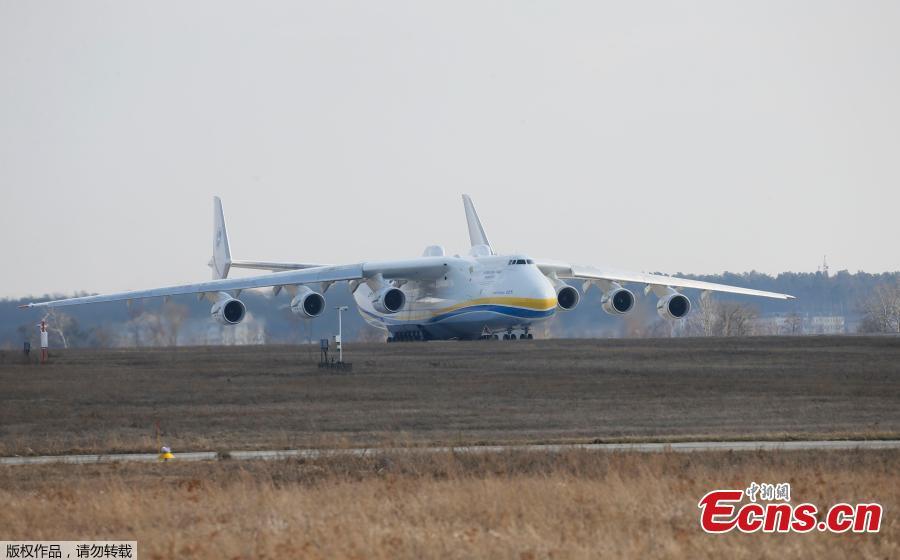
Supply sources
The winter of 2017 was a perfect storm for natural gas. For example, gas shipments from Turkmenistan fell by 32 percent from September to November, which could not be made up by volume from Uzbekistan and Kazakhstan, according to China's customs authority. In addition, a large Sinopec liquefied natural gas terminal in Tianjin did not become ready for commercial shipments until this month.
Domestic production of natural gas increased by 10.5 percent, while imports made up the difference, growing by 28.9 percent. As of 2016, China's gas came from 60 percent domestic production and 40 percent imports, but the central government expects imports to grow to 50 percent by 2020.
Imports consist of liquid natural gas, imported by ship, and pipelines, currently mostly from Central Asian countries. A new pipeline from Russia is expected to bring natural gas to Northeast China and to Shanghai by 2020. However, LNG is abundantly available and can provide flexible supply-especially once receiving terminals and underground storage capacity are completed.
In 2017, LNG took a bigger share of the imports. China imported 68 million metric tons in 2017-of which 38 million tons was LNG and 30 million tons was from pipelines. The previous year, the total was 54 million tons, of which 26 million tons was LNG and 27 million tons from pipelines, according to Meidan, of Energy Aspects.
China's LNG imports surpassed those of South Korea to become the world's second-largest after Japan. According to Marc Howson, director of the LNG market at S&P Global Platts, a further increase to 50 million metric tons is expected in 2018. Australia is the major supplier, followed by Qatar, Malaysia, Indonesia and Papua New Guinea.
The U.S. Energy Information Agency estimates that China has huge supplies of unconventional shale gas, about equal to those of the US and Canada combined. However, extraction of that gas is still in the early stages.
"Sinopec is developing shale with quite good results in Chongqing, producing 5 billion to 7 billion cubic meters of gas, quite a good accomplishment," said Meidan. "However, the geology is still unclear, and therefore the technological needs and the pricing environment are all open questions. Even the US shale revolution that essentially took off in 2000 and reached a dramatic increase in output within five years was almost 20 years in the making-thousands of wells had been drilled by private firms, backed by various government incentive schemes. And when shale took off, natural gas prices were high enough to sustain development efforts."
Natural gas use is expected to grow to 10 percent of China's total energy mix, up from around 7 percent now. Combined with an even stronger emphasis on anti-pollution enforcement, it will be a key component of a cleaner mix of energy use and upgraded industry.
Emphasizing that air pollution control doesn't conflict with the effort of developing the economy and improving people's lives, Wang Guoqing, spokesman for the first session of 13th National Committee of the Chinese People's Political Consultative Conference, said: "Development with high emissions and pollution affects not only long-term economic development, but also people's health. That is not the development we want."


















































